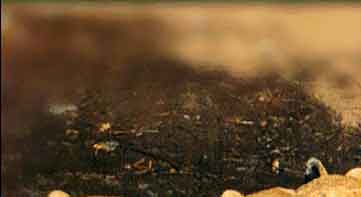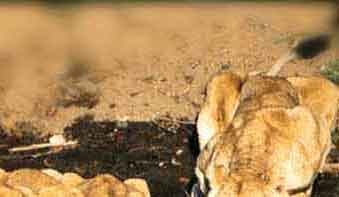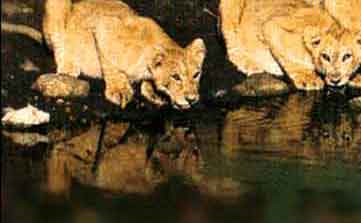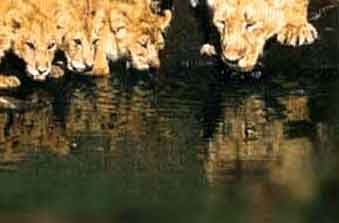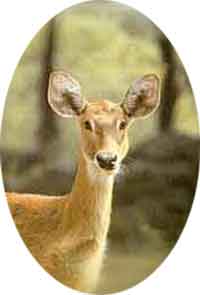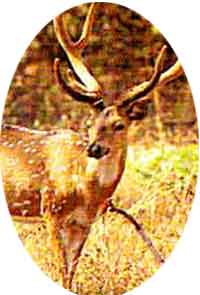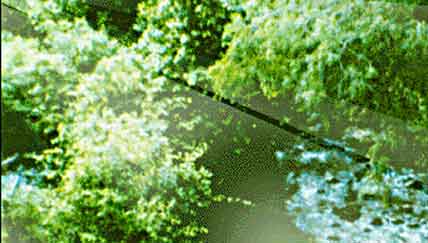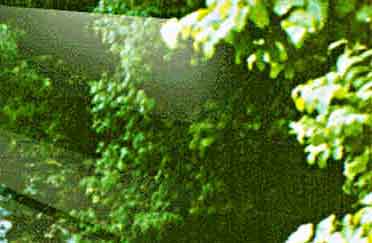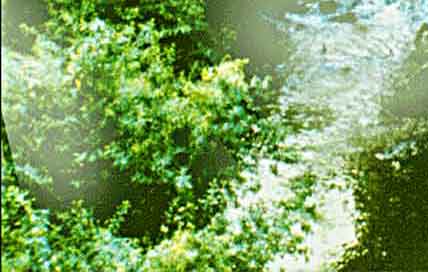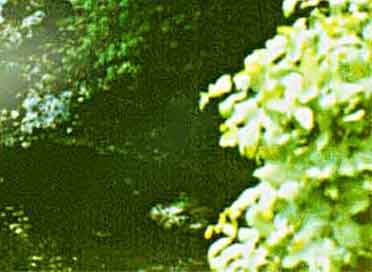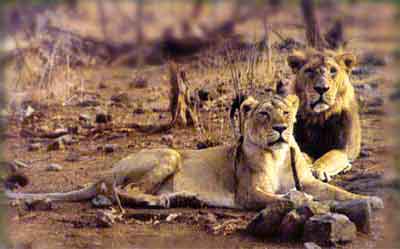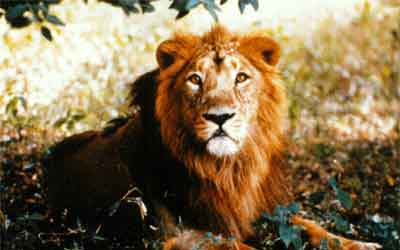SASAN GIR:-
The lion, panthera leo, inhibits the forest of Gir in the Saurashtra
peninsula, attracting sixty thousand visitors to this sanctuary of Gujarat every
year. This last refuge of the Asiatic lion was once threatened with extinction
of when the population of lions had dwindled to less than 20 in 1913. This
prompted the British administrators to put a blanked ban on shooting of
the lions and thereby affording much needed protection to the king of the
wild.
One foot shorter than its African counterpart, Gir lion has a maximum length
of nine-and-a-half feet. it has a thin and short mane and large teeth. It
cannot use both the jaws at a time owing to these teeth. It has 28 teeth in all,
14 in each jaw and their main function is to break food rather than chew
it. It has 18 fingers and an equal number of nails which are used in
killing the prey.
These nails are of double fold and hollow and can be pushed forth and drawn
back into the feet. While attacking the prey, these nails move foreward
and when the work is over, the get drawn inside. It has a powerful sense of
smell and when separated from the family, it is guided by the smell in its
search. Though ferocious, it shuns the presence of human beings. It can be jump
upto 16 feet and kill larger animals, but only when it is hungry. Of all the
species of wild, it is only lion, who kills only when it is hungry and attacks
human beings only if it is starving. This magnanimity has earned for it
the title of the king of the wild.
The lion comes of age at the age of 5 years while the lioness becomes mother
at the age of 3. Normally a lioness gives the birth to two or three cubs
at a time. Due to their preference for an open habitat of the Savannah,
the Gir forest is eminently suited to their requirement. Wildlife
conservation programme started by the Forest Department in 1965 has raised
the population of the lion from 177 in 1968 to 304 in 1995. There is also
a reciprocal growth of herbivorous (cheetal, samber ,nilgai, wild bear, chowsinga
or four-horned antelopes, chinkara) from about 9600 in 1974 to 38000
in 1995.
The state government has declared an area of 1412 sq.kms. as the
Protected Area of which 259 sq.kms. is as National Park and 1153 sq.kms. as the
sanctuary. Besides there is a Buffer Zone to monitor and regulate the
spill-over. The census carried out in May 1995 has revealed that the lion
population is spread into seventeen zones, with the highest concentration in
Jasadhar (39 lions), Dedakadi (39 lions), Visavadhar (29 lions) closely followed
by Khambhat, Chhodawadi and Ankolawadi zones. The census has also
registered the growth in the population of other carnivores such as panthers
(268) and striped hyaena (137). The supporting herbivores have grown manifold
with the spotted deer population touching the figure of 32000 from a mere 4500
in 1974.
It is said that Gir not been a lion sanctuary, it would have been termed one
of the finest bird sanctuaries in Gujarat. Of more than 300 species of
birds that nest in the Gir, crested serpent, bonnalis and crested hawk eagles;
brown fish and great horned owls; pygmy woodpecker, black headed oriole and
Indian pitta are the chief attraction. Another attraction is the large
population of marsh crocodiles concentrated at the Kamaleshwar Dam and the
Crocodile Farm.
The most important aspect of the Gir is that it has become a very stable
ecosystem with tremendous regenerating, self-supporting and sustaining power due
to its rich and diverse fauna and flora. It is the largest compact tract of dry
deciduous forests in the semi-arid western part of the country with the
last surviving 'gene pool' in nature. The protection which has assured
preservation and growth has given rise to fresh challenges, the challenge of
territorial competition among the lions in the Gir. The issue is permanently
tackled by allowing satellitic population of lion outside the Gir in Girnar,
Mitiala and coastal forest zones.
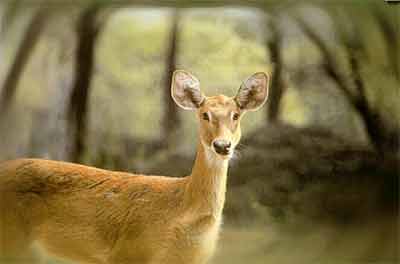 |
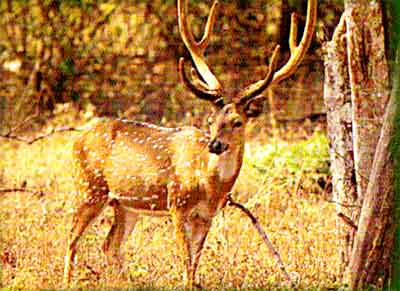 |
As the practice of arranging lion shows was found to be cumbersome for the
lions and with the view to reduce the disturbance from the large influx of
visitors, an Interpretation Zone has been created at Devalia, 12
kms. from Sasan. Comprising the chainlinked fenced lion area of 412
hectares, it is Gir in a nutshell and ideal for the tourist in a hurry. The
basic aim of creating this facility is to provide opportunity of viewing lions
and other animals in their natural habitat and to reduce the tourist
pressure on the Protected Area. The Zone remains closed on Wednesday
Access : It is 45 kms. From Junagadh And 150 kms From
Rajkot. Rajkot is connected by Air with Mumbai, and connected by
Train and Road with almost all major cities of India.
Where to Stay :Forest Dept. and Local Guest Houses. |
